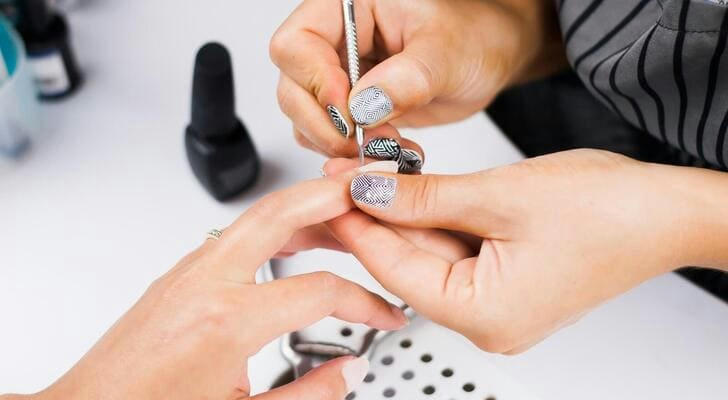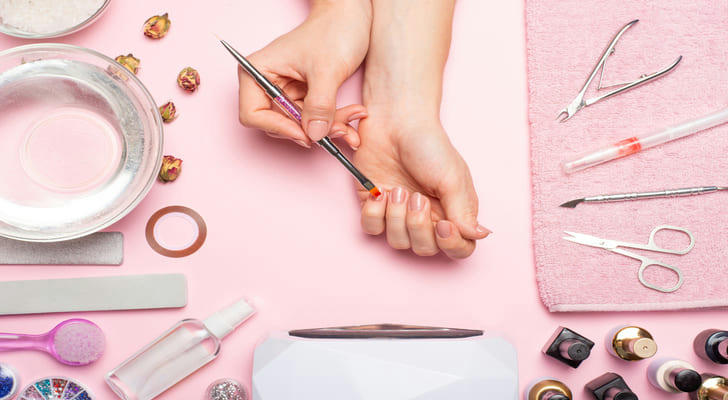Nail Art Course
The US nail industry is globally renowned for its diverse styles and rigorous professional standards. Whether pursuing a personal interest or planning to enter the beauty industry, systematic nail courses provide learners with a solid foundation. This guide explores course selection, licensing, skill enhancement, and career development strategies to help learners efficiently navigate their journey.

I. Types of Nail Courses and Selection Strategies
1. Educational Institutions and Their Features
Community Colleges and Public Vocational Schools
Institutions like Santa Monica College’s Nail Technician Program in California offer cost-effective courses, typically spanning 400 hours of theory and hands-on training aligned with state licensing requirements. Public schools emphasize transparent tuition (eligible for federal aid) and standardized curricula.
Private Nail Academies
Schools like New York’s Nail Artistry Academy focus on advanced techniques such as 3D sculpting, crystal extensions, and airbrush art. These academies often partner with brands like OPI and CND for hands-on product training.
Hybrid Online Programs
Platforms like BeautySchools.com allow online theory study with in-person practical modules. Ensure the program is state-approved to qualify for licensing exams.
2. Core Curriculum Breakdown
Foundational Modules
Nail Anatomy and Pathology: Identifying issues like onychomycosis or nail separation.
Sanitation and Safety: Mastering OSHA-compliant sterilization protocols.
Client Psychology: Managing allergies or design disputes professionally.
Technical Skills
Basic Care: Shaping (square, almond, ballerina), cuticle work, and hand/foot massage techniques.
Polish and Gel Application: Gradient, French, and magnetic cat-eye designs.
Extension Methods: Comparing tips, acrylic powder, and gel extensions.
Business Electives
Some schools offer salon management courses covering inventory, social media marketing (e.g., Instagram content planning), and booking systems.
Selection Tips
Verify school accreditation via BeautySchoolDirectory.com.
Prioritize programs offering live client practice (50+ services required before graduation).
Attend trial classes to evaluate instructors’ adherence to standardized procedures.
II. Licensing Process and Exam Preparation

Licensing requirements vary significantly by state—plan accordingly:
1. State Exam Framework
Training Hours
California and Texas require 400–600 hours; Florida mandates only 240 hours.
Written Test
Covers sanitation laws (40%), chemical safety (e.g., MMA monomer risks), and first aid.
Practical Assessment
Perform full-service tasks (sterilization, trimming, polish application) while demonstrating hygiene compliance.
2. Study Resources and Strategies
Materials
Use Milady’s Standard Nail Technology (industry-standard textbook) and official Nail Technician Exam Prep Books.
Mock Practicals
Record and self-evaluate using state checklists (e.g., New York’s Practical Exam Checklist), focusing on sanitization and workflow.
Community Support
Join Reddit’s r/NailTechs or Facebook’s “Nail License Exam Support” for state-specific tips.
III. Skill Refinement: From Classroom to Career
1. Maximizing School Resources
Live Client Practice
Top schools operate “student salons” for real-world experience, addressing complex cases like bitten nails or short nail beds.
Tool Proficiency
Master electric files (E-File speed control), UV/LED lamp timing, and sculpting brush angles.
2. Internships and Industry Exposure
Salon Partnerships
Chains like MiniLuxe offer 6–12-week paid internships with mentorship in client communication and efficiency.
Trade Shows
Attend Premier Orlando or Cosmoprof North America to explore innovations like Korean airbrush art or Japanese琥珀 extensions.
Portfolio Building
Curate an Instagram portfolio with hashtags: #BasicCare, #CreativeDesign, #NailRepair.
Tag techniques (e.g., “CND SolarOil cuticle treatment”) to attract employers.
IV. Career Pathways: Employment and Entrepreneurship
1. Employment Opportunities
Salons
Start as an assistant, progressing to independent technician within 6 months.
Specialized Markets
Film/TV Nail Artistry: Join the IATSE Local 706 union for on-set design work.
Fashion Collaboration: Partner with photographers for editorial shoots, aligning designs with themes.
Entrepreneurship
Launch a home-based studio (requires Home Occupation Permit) with an initial investment of ~$5,000–$10,000 (equipment, products, insurance).
2. Industry Trends and Skill Upgrades
Healthy Nail Movement
Pursue certifications like CND’s Shellac Certified to offer nail health consultations.
Sustainability
Adopt water-based polishes, removable press-ons, and plant-based removers.
Digital Integration
Use apps like NailSnaps for custom designs or StyleSeat for appointment management.
V. Continuous Growth: Certifications and Resources

1. Credentials
Brand Certifications
OPI’s Expert Level certification grants access to premium product lines and training.
Global Recognition
Obtain CIDESCO diplomas for international practice in the EU or Asia.
2. Industry Networks
Associations
Join the Professional Beauty Association (PBA) for policy updates and discounted continuing education.
Learning Platforms
Subscribe to Nailpro Magazine for masterclasses (e.g., Tom Bachik’s red carpet nail breakdowns).
Conclusion: Shaping a Professional Future through Nail Artistry
The US nail industry demands technical precision, creativity, and client-centric service. From stringent sanitation to eco-friendly innovations, professionals act as artisans, health advisors, and entrepreneurs. By mastering foundational skills and staying attuned to trends—whether becoming a luxury salon lead designer or launching a sustainable brand—you can carve a unique path in this billion-dollar market.
